
A Caveat
Undergravel filters have not been widely tested as a filter in the aquaculture industry, The limited testing done on gravel filters for aquaculture was “all over the map” due to the very high loading of commercial operations. So one is left with common sense and anecdotal “testing” as the only sources of information in the analysis below.
This is a very long and boring commentary on undergravel filters. Read on only if you are a real nerd like the author.
Anecdotal Evidence
Note that Cory of Aquarium Co-op, the most honest and brightest guy in the business, says under gravel filters work well. It is anecdotal evidence but coming from Cory it is a rock solid endorsement. We avoid anecdotal evidence in general. But some comments from some very experienced hobbyists in Facebook aquarium forums are pertinent here:
- Dennis James Strydom: “Still one of the best forms of filtration out there. Shops don’t promote them because its a one time purchase with no return business. They have no moving parts that need replacing and you don’t have to keep replacing media etc. They’ve only been superseded by our need for shiny new things and must haves that we don’t really need. Only down side is you are limited in substrate, you can only use gravel.”
- Marcelo Villanueva: Under-gravel filters are the most effective and efficient; time tested by professionals and hobbyists since forever and still strongly used in the hobby by experienced hobbyists.
- Trevor Greene: “Best filter you can use short of a sump. ASSUMING you now how to use and maintain them PROPERLY, which is to say just leave them alone and let them do their job. Which doesn’t seem to be what most people think you should do with undergravels. So they have problems, and end up hating them. I have used them for going on 50 years and once I figured out what was what, have never looked back. Tried many other methods, but hated them all. Currently have 2 tens, 1 twenty, and 1 Forty Six Bowfront. All running UGF and looking great.”.
.
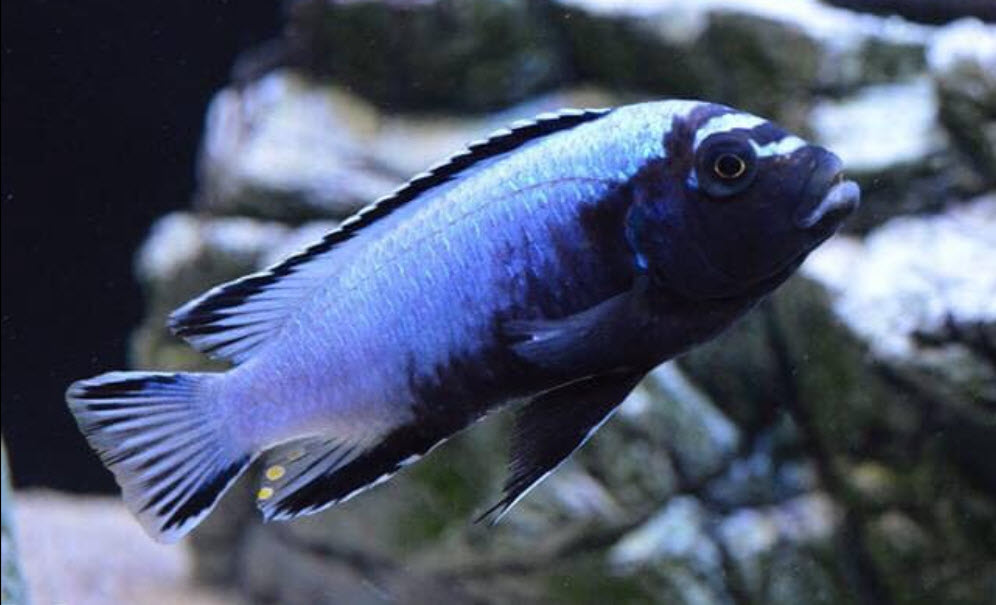
.
- JJ Huff: I have them in all 14 tanks and have used them for 55 years. When they need cleaned they are a bear BUT that is only every 10 years or so. You hear waste accumulates but that is absolutely untrue. Another myth is that they create dead spots etc. In 55 years of multiple tanks I’ve never had one clog or fail or had any issues from using one. Or from crashing a tank except from the failure of a high end automatic feeder while I was on vacation and no filter would have prevented that loss. My well over 100 fish are mostly years old and raised from babies in my tanks as most of my tanks are at maximum bioload.
They keep water cleaner than any other filter because they turn all your gravel into filter media. I use 2 lbs per gallon in my tanks – 1 lb is minimum. And it allows enough good bacteria to grow that your tank is virtually crash proof unless you over clean your gravel or have a major feeding catastrophe. It also means your nitrates are created at root level so plants grow beautifully. I have never fertilized yet trade my excess plants to my LFS.I do use HOBs as auxiliaries on some of my bigger tanks like the 90 and 65s because it extends time between cleaning by removing more of the silt. I also use powerheads on the bigger tanks for increased circulation.There has been some negative marketing hype against UGFs because they last a lifetime, are inexpensive and require no replacements. I’ve done all the research on other filters as they came out and as changes are made. UGFs are still by far the best.
- Barry Johnson: “JJ Huff I agree. I have been using them since late 60s”
- Mike Totman: “I agree, in my 26 tanks, I have under gravels in about 12 of them and those are my most stable”
- Had undergravels as stand alone in all my tanks for decades. Pure water, healthy fish, easy maintenance and easy to hide the tubes with a couple plants. There is no question they work well.”
.
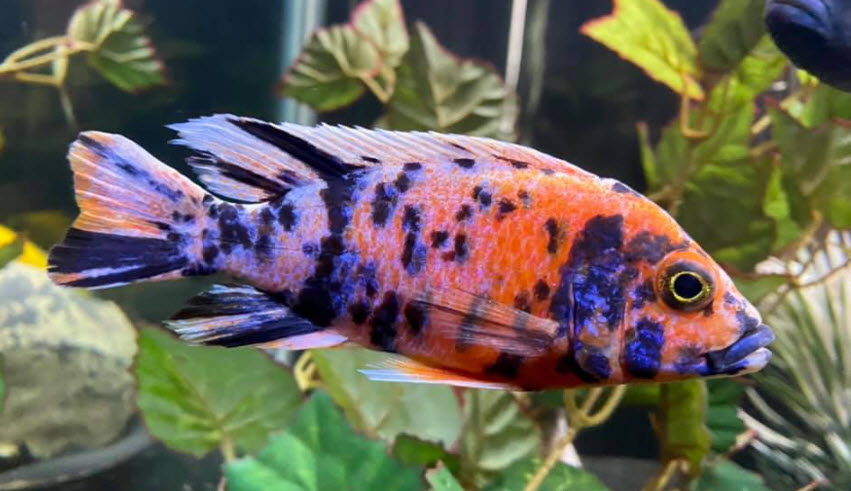
- Matthew E. Ruff: “The best filter is an undergravel filter. You can use an air pump to run it, but I’d recommend powerhead(s). I’ve had UG filters go years without cleaning. Undergravel systems don’t break down, nor do they require regular maintenance. Other than being an inexpensive threat to fancy filtration systems that make manufacturers a lot more money, I don’t know why these systems aren’t used more by hobbyists. I use them in 100% of my predator tanks because of this filter’s ability (once well-established) to handle enormous bioloads without a hiccup. You would have to use gravel, though. The only real drawback to UG filters is the limitation of substrates you can use.”
- Greg Kenly: “Love under gravels. They are fail proof, crash proof… and, if power goes out a air pump, never loses prime or get clogged. I use them still with canisters, hang on backs and sumps. My tanks never lose cycle.
- Christine Lewis: I like the UG lack of noise, agitation and outside accoutrements. I’ve had leaks from HOB and canisters. Never from a UG.”
- Isaiah Wiles: “Love UGF. Have used many HOBs and canisters throughout the years and I must say… I LOVE my 55g UGF tank. It’s the lowest maintainable tank I own. Just need to top-off the evaporation and water change every 2 weeks… Levels remain consistent. No need to clean it monthly like canisters or HOBs. Anyone telling you UGFs are outdated just wants you to spend hundreds of dollars of your own money on filtration. Nothing wrong with UGF, it’s tried and true.”.
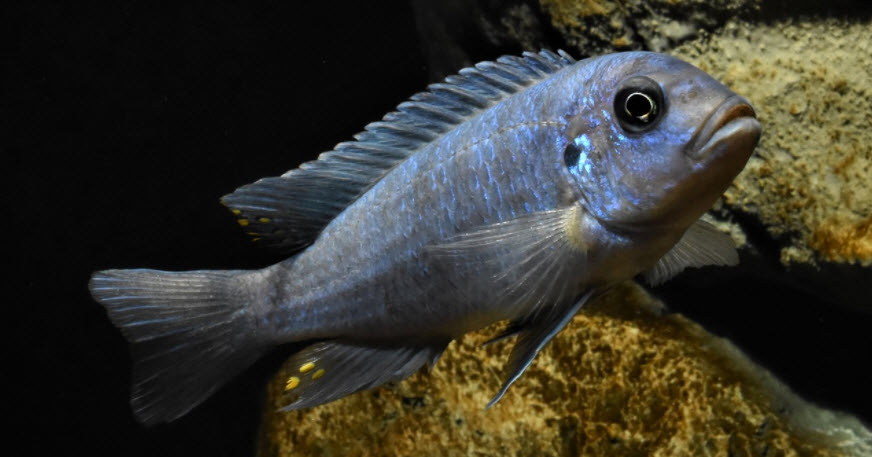
Maylandia fainzilberi Maison Reef .
- Randy Kiriluk: “50 years of fish keeping and I still have had the best results as far as fish longevity and crystal clear water with undergravels with a power head, and I have tried them all. I do think plants are a little tougher with them, but still doable. They are amazingly cost effective.”
- Under gravel filters may be outdated in comparison to today’s gadgets. However I would still take one today if I could find one. They work.”
- Andrew Osborn: “UGF is about the best filtration system available hands down. I use them on EVERY tank, with the exception of my bare bottom tanks. Do they have to be cleaned out eventually? Yes, but there are ways to do it without taking your tank down. I have been running UGFs for over 35 years and they give the clearest water with the best parameters of any filter on the market. Powerhead on only 1 uplift tube filters better than ANY canister filter. And yes, they make UGF for any size tank. And saying that a planted aquarium clogs the filters is complete nonsense. Here is my planted 180 running on ONLY UGF with an Aquaclear 50 powerhead on one uplift tube.

- Lynette DiPasquale: “30+ years keeping fish and I still love my UGF’S. I wanted sand in some of my tanks (due to the fish I wanted to keep) and the hob’s and canisters are WAY more upkeep time. Granted, the media is a one time buy for the most part (except for the filter pads in canisters), but the CONSTANT fear of leaking is never a good thing! I use powerheads to rev up the benefits. They’re an awesome filter!”
- David W Stevens: “35 years and never used anything but UGF”.
- Michael Collins: “I had one and had 2 power heads they worked great”.
- Tammy Lynn: “I have them in three of my tanks. Have been using them since the 80’s”.
- Lashi Dodge: “I have UGF with power heads in my 125, and it is the easiest, quietest, cleanest tank I have.”
.

- Tammy Lynn “I had been out of the hobby for about 15 years and did a couple of months of YouTube research to see if my UGF with HOB was still considered the best filter system by hardcore hobbyists. At first all I saw was people saying don’t use them with no real reasons. My tanks were always crystal clear with this system and my fish lived long healthy lives. Then, I found Cory of Aquarium Co-op and eventually found his video on filters. I now have six tanks. Two with the old school UGF + HOB, one with UGF only and three with just a sponge filter. My UFG + HOB tanks are fully planted and I never clean the UGF. My UGF only is a pond snail and shrimp breeding tank that is almost 100% planted but does have guppy grass, duckweed and water hyacinth in it and it’s crystal clear and clean and everyone is happy and healthy. My sponge filter tanks are doing good but require more filter maintenance. One has fine gravel that I cannot use with an UGF. I would recommend both for the right reasons. Just like Cory does. I also have been to Ohio Fish Rescue and talked to Big Rich about UGF. His monster pond has an UGF with pea gravel in it.”
- Robert E Holt “I have been keeping fish on-and-off for over 50 years. Most recently setting up several new tanks after a 16 year hiatus. Doing research on equipment and current practices presented me with a lot of confusing data, most of it contradictory to my past experience. Imagine my surprise when is was told “nobody uses undergravel filters, they simply don’t work”. I have used these filters successfully for many years, and in fact currently have one in my 29 gallon tank. The water in that tank is always crystal clear.
- Ben Z “Oh yeah, I just remembered something that might tickle you. In Singapore some of the “old timers” have a way of judging if someone else is a “fellow old timer”. They start talking about UGFs. If the other guy says something along the lines of “just leave the bloody UGF alone”, he’s “in-the-know”. It gets even funnier sometimes. A couple of local fish shops I like to visit, run by old timers, stop pushing the fancy bells and whistles once they know a customer uses UGFs. Some unspoken code? Hmmmm…. And the most revealing: I once knew an old guy who ran a local fish shop before he retired a decade ago. He told me straight up why he didnt bother promoting or stocking UGFs anymore: “Because customers stupid!!! They don’t listen when you tell them don’t clean!!! Then they complain UGF no good!!! So I sell canister better. I make more money. customer complain canister spoil? go see warranty got cover not. No cover? Too bad. Who ask u buy canister.”
We agree 100% with ALL these comments. Many of these comments are eerily similar to my experience. I have had them in all my many large tanks (14 last count) for some 54 years now and love under-gravel filters. I even had a pond that had an undergravel filter on it (pea gravel six inches deep) which had crystal clear water.
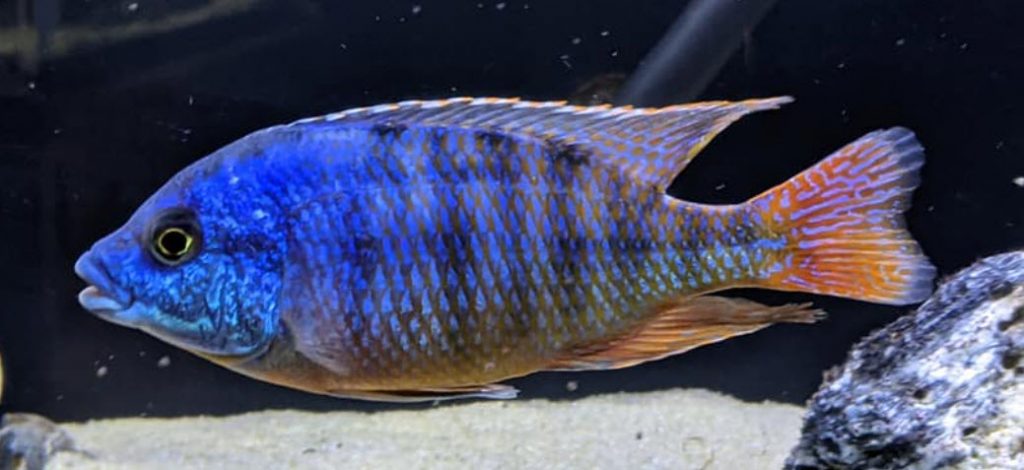
An Analysis of the Common Myths
Look at this from the standpoint of the local fish store and the manufacturers of canister filters and hang on back filters (HOBs):
- The profit on canisters and HOBs is three to ten times higher than the profit from under-gravel filters.
- Canisters and HOBs constantly need costly new impellers or new motors, Under-gravels never wear out and only need cheap new airstones or powerheads every once in a while
- Canisters and HOBs rarely last more than five years and need to be replaced often. Under-gravels last forever.
- The directions on canisters and HOBs typically say to replace the media on a regular basis, every one to three months. This makes huge profits for the manufacturers (and is actually rarely necessary!). The gravel in an undergravel lasts forever.
If you were Petco or the local fish store which product would you want to sell? What product is going to make you the most profit?
And if you have an aquarium filter review website with links where you can buy canisters and HOBs and you get a percentage commission on each sale, which product do you give a good review to? And which product will you denigrate?
If you were Fluval which product would you want to manufacture and distribute? And when your marketing department comes on social media with their “social media optimization” campaign with a ton of Facebook and blog accounts which are actually members of the marketing department, what do you think they are going to say about undergravel filters?
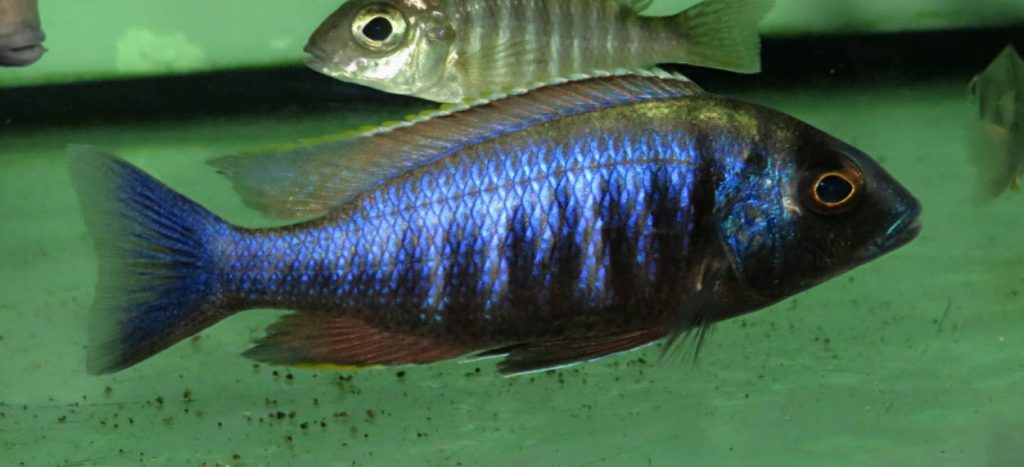
Under gravel filters have taken a lot of heat for a lot of “reasons”, virtually all of them completely bogus. We found a “review” of under-gravel filters on an internet site which reviewed filters and had links to several expensive canister filters. One must realize that when one clicks on these links and buys a canister filter, this internet website gets a percentage of the sale. The more expensive the canister, the bigger their commission. Thus there sill always be a decided bias against undergravels on any such website.
The comments this website “review” made about under-gravel filters were:
“So, What’s the Problem with Under Gravel Filters?
The argument against under gravel filters is that over time, the gravel gets clogged with debris and flow rates decrease, thereby decreasing filtration and allowing a buildup of waste in the water, reducing the water quality. Furthermore, the restriction in water flow through the gravel will allow anaerobic pockets to form in the gravel, which can promote the colonization of harmful bacteria which can potentially poison an entire aquarium.
Additionally, an under gravel filter provides only biological filtration and poor mechanical filtration, and can only provide chemical filtration for short periods, and at the cost of reduced efficiency of both the biological filtration and mechanical filtration provided. In some of the extreme cases reported, loss of power for a few hours has resulted in entire aquariums crashing, killing all the occupants of the aquarium!”
Interesting!

Let’s break this argument down with my rebuttals:
The argument against under gravel filters is that over time, the gravel gets clogged with debris and flow rates decrease, thereby decreasing filtration and allowing a buildup of waste in the water, reducing the water quality. (I’ve never seen an under-gravel filter get “clogged with debris”. NEVER! And I leave my under-gravel uncleaned for years at a time since under-gravels function best if they are never cleaned. As a matter of fact, if frequently cleaned under-gravel filters don’t work well and they are a huge headache. And as for “buildup of waste in the water”, this reflects the very incorrect view that the brown detritus that builds up in an under-gravel filter is fish waste and uneaten food. The detritus in an under-gravel filter is largely beneficial bacteria and is good for the aquarium, not bad.)
Furthermore, the restriction in water flow through the gravel will allow anaerobic pockets to form in the gravel, which can promote the colonization of harmful bacteria which can potentially poison an entire aquarium. (I wish I could somehow remove the myth of anaerobic conditions occurring in normal fish aquariums. Author after author just blissfully repeats this myth ad nauseam.
In a relatively open fluid medium such as the interstices of aquarium gravel there is water exchange and oxygen diffusion sufficient to ensure that anaerobic or oxygen-less conditions only occur if the gravel is greater than at least two feet deep [try ten to one hundred feet probably] and at least ten years old. AND there must be no water flow through the gravel. Let me emphasize one simple truth:
.
Anaerobic Conditions do not Occur in the Home Aquarium
‘
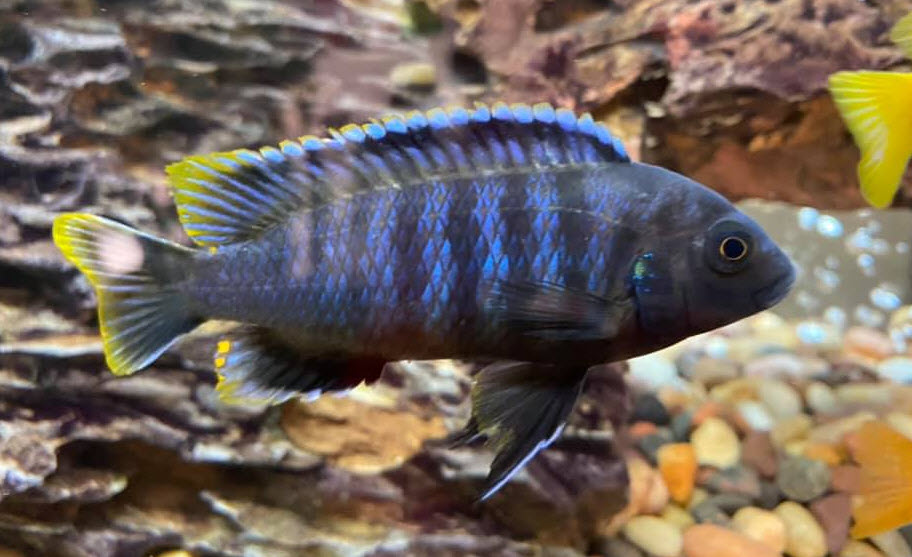
Additionally, an under gravel filter provides only biological filtration and poor mechanical filtration. (Where do I start? “only” biological filtration? Huh? Biological filtration is 90% of the game! An under-gravel filter provides excellent biological filtration due to the well aerated water flow over a huge surface area. Under-gravel filters do fail in the area of mechanical filtration. But I find that mechanical filtration is not needed with under-gravel filters as feces seem to rapidly break up and decompose on top of the gravel.)
and can only provide chemical filtration for short periods, and at the cost of reduced efficiency of both the biological filtration and mechanical filtration provided. (“Chemical filtration” is a purely profit making bit of “snake oil” which give huge profits for the manufacturers while providing little or no benefit to the hobby. So this whole point is pointless)
In some of the extreme cases reported, loss of power for a few hours has resulted in entire aquariums crashing, killing all the occupants of the aquarium! (This is just patently false. It is simply impossible for a loss of power in an undergravel filter to result in the loss of fish in an aquarium. I lost most of the fish in several aquariums during a power outage. All my large aquariums have under-gravel filters. But the only aquariums I lost were very heavily stocked Lake Malawi aquariums. The aquariums were lost because the oxygenation stopped, not because they had under-gravel filters. This is a risk you run when you overstock aquariums. All the moderately stocked aquariums with under-gravel filters were just fine. I now have a generator which I can quickly hook up for power outages to provide aeration.)
Does this give one some idea what the profit motive can do?

Even Wikipedia bought into the myths about under-gravel filters. Wikipedia says:
“Under-gravel filters are not effective if the substrate bed is uneven. In an uneven gravel bed, water will flow only through the thin portions of the bed, leaving the more heavily covered areas to become anoxic”.
Now this negativity in Wikipedia is not surprising. Wikipedia is open sourced so filter manufacturers are free to use it to spread unfounded myths.
Water flow is a matter of pressure loss. The thin openings of the plastic plenum under the gravel force the water flow to be relatively even despite the thickness of the gravel. In a thinly covered area there is lower pressure loss, so more water may flow there, on the order of 70 to 80% of the water flow. But the thick areas, while having a high-pressure loss, will still have water flow, they do not stagnate. And in any case this 20% to 30% flow is more than enough to support any and all beneficial bacteria and quite decidedly will not result in anoxic or anaerobic conditions (anoxic and anaerobic both mean “very low oxygen”).
Some say that the gravel will harbor disease organisms in the brown gunk. This simply isn’t true. These people are thinking about humans and the ecology of disease organisms in an air environment. The ecology of disease in a water environment is completely opposite an air environment. Brown gunk harbors organisms which eat disease organisms, so brown gunk actually PREVENTS most fish diseases. And, in any case, a healthy canister or HOB will also have a lot of brown gunk in it.

Under-gravel Filters and Biofiltration
Under gravel filters provide excellent biological filtration, breaking down uneaten food and waste to nitrate with a very large mass of biofilter media.
The large mass of well aerated gravel in an under-gravel filter does the biofiltration tasks much better that all but the best filtration systems and it does it for much less money. I have never had an ammonia reading in any established under-gravel aquarium I have had, even after years of operation. If you use powerheads one can get crystal clear water with under-gravel filters. I heartily recommend under-gravel filters.
A test was done on the ability of various filters to oxidize ammonia in the aquarium. This chart shows the result:
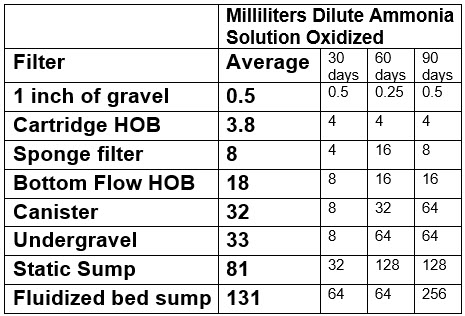
For ammonia oxidation an under-gravel was the equivalent of a canister filter. An undergravel requires ZERO maintenance while canister need constant maintenance. Canisters fall apart with time and often leak. I’ve got under-gravels that are still working after over thirty years. And under-gravel can never leak.
Under-gravel Filters and Detritus
There is this myth that a huge amount of detritus builds up in an under-gravel filter and must be removed every month or so. This myth is the result of someone removing most of the water in an aquarium with an under-gravel filter, then stirring up the gravel to clean it. A brown opaque fluid will result. Per conventional wisdom this “obviously” represents a huge amount horrible dirty feces and “horrid” gunk.
If one takes this opaque brown water from say a 100-gallon aquarium after six months and pumps it into a 100-micron sock, filtering out the “horrid” gunk, one will be surprised to find 2 to 5 teaspoons of a gravy like brown material (I know, I’ve done it). This is not a lot of material. This mucilaginous material is largely long chain polysaccharides (sugars) secreted by various types of beneficial bacteria. What little protein this material has is inside the bodies of the living beneficial bacteria. This is not “horrid” gunk, it is good, beneficial gunk.
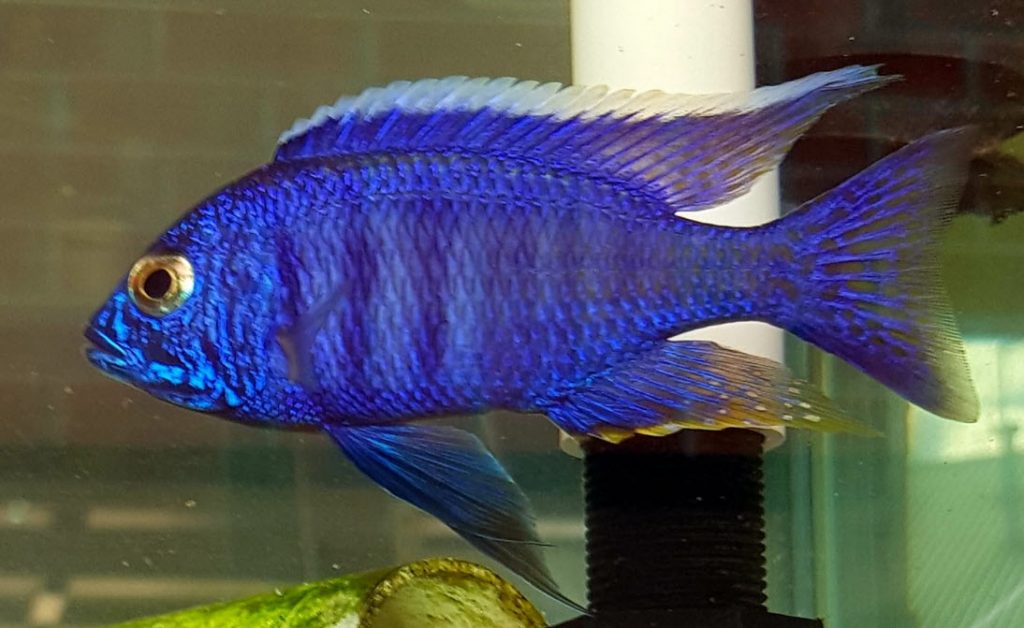
This lack of buildup of material in an under-gravel filter is due to the warm aerobic nature of the under-gravel filter in a tropical aquarium. Organic materials decompose rapidly under such conditions, so the brown “gunk” does not build up as much as one might think. In any case, the small amount of brown “gunk” which builds up in an under-gravel filter is good beneficial bacteria and other beneficial organisms, not bad uneaten food and feces.
Vacuuming the depths of an under-gravel filter is counterproductive and only reduces the biofiltration capacity of the aquarium and results in ammonia spikes. In extreme cases it can kill the fish. This deep vacuuming is one of the reasons that people with under-gravel filters can see fluctuations in water parameters.
If you must vacuum, only vacuum the surface. I’ve never had to vacuum an under-gravel filter. NEVER! I’ve never had mulm form above the gravel. The solid waste just breaks up and disappears into the gravel. Note that I use powerheads on my undergravels and always have. Air lift operated under-gravels tend to have some feces and mulm on the gravel.
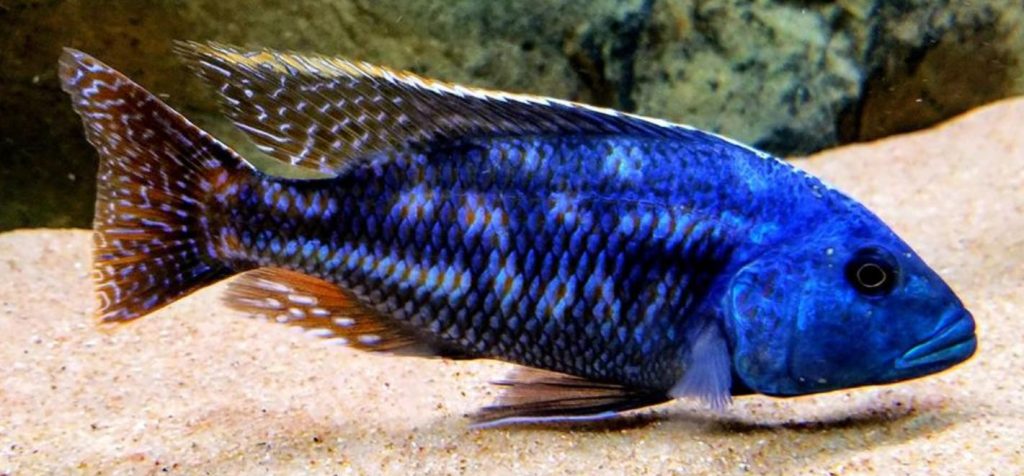
Note that one well meaning but ill-informed commentator on social media said under-gravel filters build up a mass of rotting material under the bottom plates which feeds contaminants back into the water. I have several long established (ten years?) white plastic under-gravel filters on stands where you can see through the bottom of the aquarium. I have always been amazed at how clean everything is under the plates. There typically is some sand, apparently from the gravel, but no detritus or mulm. You can clearly see the white plastic plates from under the aquarium (note these white plates haven’t been sold in thirty years so you know how far back I go!).
Now I will issue one caution. There is something called the “carbon to nitrogen ratio”. I feed very high protein food to all my fish and always have. If one were to feed low protein, high filler food to a very heavily stocked aquarium, I could see where the gravel might foul and plug up. The high carbon to nitrogen ratio of the food might possibly in rare instances cause the buildup of a lot of detritus in the gravel. But most hobbyists with heavily stocked tanks know enough to feed protein levels over 45% and to avoid fish foods with a lot of fillers.
More about this can be found at:
3.9. Food and Brown Gunk
.

Anaerobic Pockets with Under-gravel Filters
Many claim that this under-gravel detritus causes oxygen depletion and poisonous gases to form if the power goes out and the flow through the gravel stops. Any biologist familiar with bacteria will find this claim ill informed.
Higher order animals such as fish must, by their high metabolism, use up the oxygen in their environment rapidly. Beneficial bacteria have very low metabolisms and use oxygen up very slowly. As the oxygen level very slowly decreases in gravel the bacteria simply shut down and go dormant. It would take months if not years for something as porous as gravel to go anaerobic in a power outage and the depth of the gravel would need to be in feet, not inches.
We examine the whole myth of anoxic or anaerobic substrates at depth in this link:
14.2.4. Anaerobic Substrates
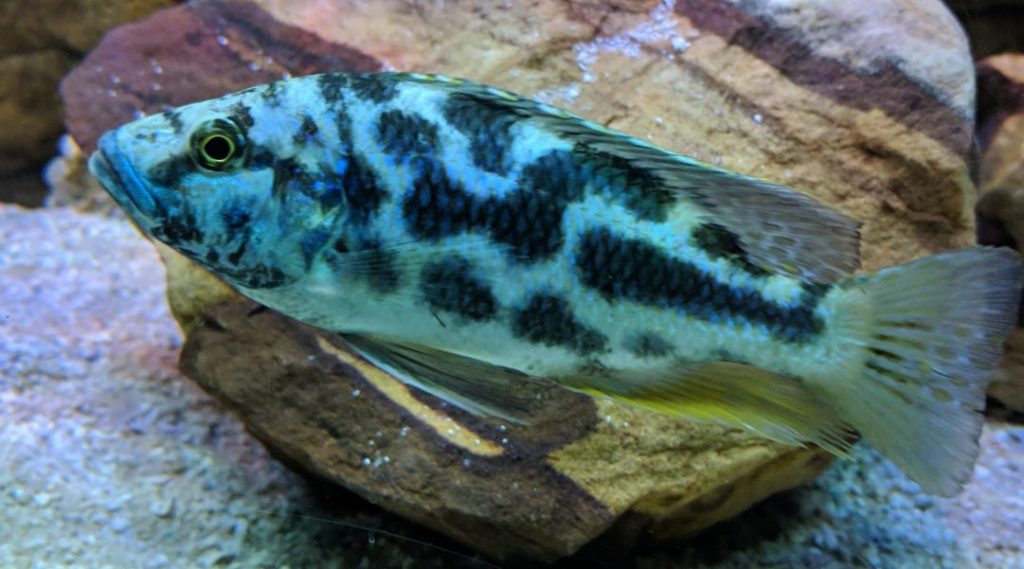
And the whole idea that bacteria rapidly die and decay without food is bogus. In the book “The Isolation and Study of Nitrifying Bacteria”, W. Gibbs, 1919, he found that BB or beneficial bacteria (scientifically these are “aerobic nitrifying bacteria”) retained their 100% of their potency sealed in a bottle for seven years. Many researchers have confirmed BB live for at least 7 months without food (Geets et. al. 2006, Wilhelm et al., 1998; Tappe et al., 1999; Laanbroek & Bär‐Gilissen, 2002). BB are very primitive, aerobic, low metabolism organisms. BB do not die in months or years without food. They only need to be kept wet and open to very small amount of air.
If the flow through an under-gravel filter were to stop the beneficial bacteria will no longer have a food source (ammonia) and will slow their metabolism. Beneficial bacteria live for at least seven years without food. The air transfer into the open pores of aquarium gravel via Brownian movement and diffusion is far more than nitrifying bacteria require. So this situation will not result in a anaerobic putrid mass.
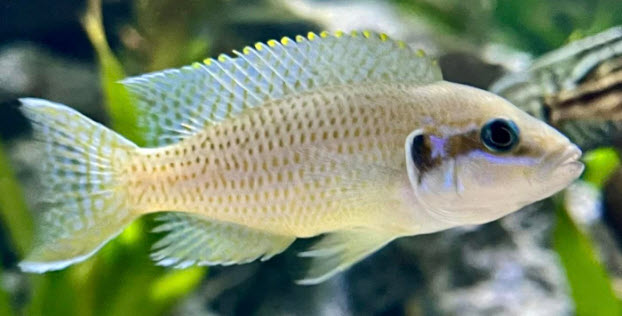
Set-up of an Under-gravel Filter
I recommend at least one inch of gravel in an under-gravel filter, especially if you have cichlids which are constantly cleaning and moving the gravel. I use one and one half to three inches. The deeper the bed the better. And use standard quarter inch (4 to 10 millimeter) aquarium gravel, not some half inch river stone you fell in love with at the aquarium show. You need a balance of flow and surface area.
A note on sizing the gravel. I have about a ton of old gravel that I have used for MANY years. It is a relatively uniform 3 to 5 millimeter in diameter. The newer gravels in the stores are less uniform, with sizing between 3 to 9 millimeter. This is just fine for setting up the undergravel. Just avoid aragonite or crushed coral “gravels” or anything smaller than 2 millimeter.
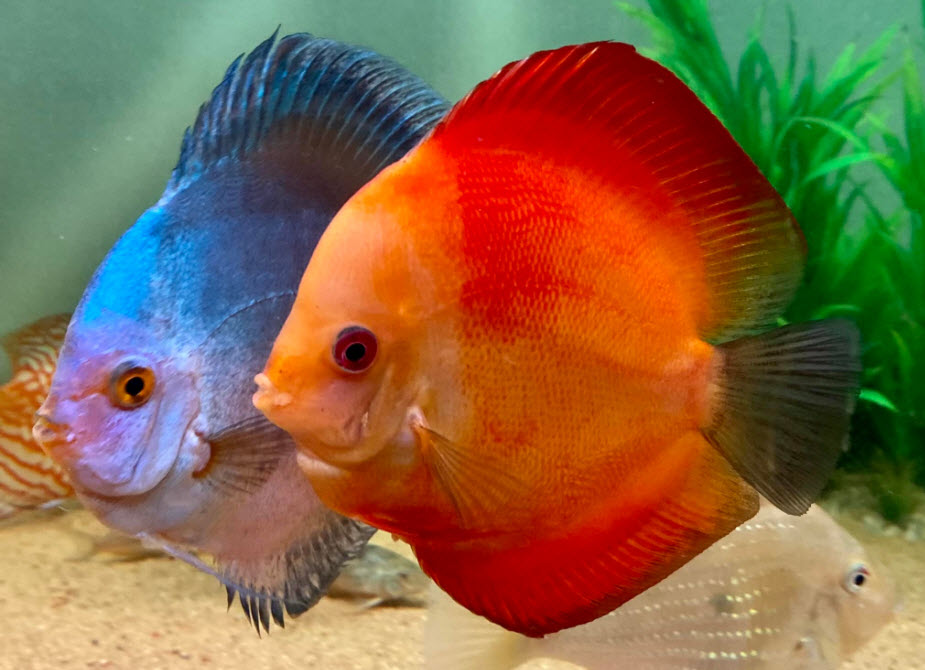
Note many vary in how they run their under-gravel filters. Some reverse the flow. This doesn’t change the biofiltration ability of the gravel. It does reduce the ability of an undergravel filter to aerate the water. I see no point to it.
And do not despair if you have an aquarium for which no one makes an undergravel filter for that size tank. Simply take the width and depth of your tank and find an undergravel filter which will fit some portion of the tank. If only two thirds or half of the gravel has plates under it there will not be a problem. It is NOT necessary to have flow through all of the gravel, contrary to popular belief. And a large 125 gallon tank can easily use three forty gallon undergravel filters. Most undergravels are six inch by six inch plates that can be easily rearranged to fit any given aquarium.

Powerheads on Under Gravel Filters
Many use powerheads on undergravels instead of air lifts. The analysis is quite complex but it turns out that the two methods are very similar in efficiency, ability to aerate and in the power consumption. Powerheads, on very rough “average”, will increase the efficiency by about 20%, not a lot. It all has to do with the fact that surface area and void factor are the two major factors in a filter’s efficiency. Flow rate is NOT a major factor.
We have been conditioned by all the marketing hype about canisters where flow is said to determine a filter’s efficiency. They do that because adding a bigger pump is cheaper than adding size to the canister body. It is all just marketing hype. But our mind still automatically says flow is important. It is not important.
And the power considerations are minute unless you have many tanks on under gravels. Even then the air conditioning costs and the dehumidifying problems with the evaporation caused by air stones can be a challenge. I’m in Florida and all of my under-gravels are inside and in air conditioned spaces. If I used air stones and lifts, my air conditioning costs (actually my dehumidification costs) would skyrocket. So I use powerheads with tight fitting covers. I buy LOTS of powerheads.

Sand Undergravel Filters
Some are very successful with large particulate sand (roughly 1 mm to 2 mm in diameter) placed over a weed mat material over undergravel plates. These sand filters will probably do very well as long as there are low stocking and high nitrogen food. If there is a high bioload or low nitrogen food these can plug up quite rapidly.
I haven’t tried it or tested it so I have no idea how well this will work. But one reader did it and it worked well for them. Again, Mother Nature is just quite flexible. My big concern is that I see no good way to prevent the weed mat material from clogging up with bacterial biofilm and forcing the flow to go around the weed mat.
In my “to-do” list I have an experiment using dye and a weed mat filter that has been in one of my aquariums for a few months. While the powerhead is operating I will release some dye over the weed fabric covered plate and see where the dye goes. Does it permeate into the gravel or does it go around the center of the plate to the edges of the plate?
Unconventional Hook-ups
Some advocate hooking up a canister in series with an undergravel filter. We DO NOT recommend this. The problem comes if the canister springs a leak (a common occurrence!). If this happens you can literally drain all the water in an aquarium and kill all the fish.

Under-gravel Filters and Plants
Note that some plants don’t grow well in the gravel in an under-gravel filter IF the filter is often cleaned. But an under gravel filter with a lot of brown mulm in it will grow plants very well.
The stationary brown mulm in an undergravel filter holds phosphates and iron compounds very well. It also has what is called a high cation exchange capacity. meaning it will hold ammonia. So plant roots will penetrate it and scavenge nutrients quite efficiently.
The pumping method for the under-gravel is important for some plants. If you have very easy “green” plants like anubias, Java fern, Java moss or vallisneria, you can use an air stone operated under-gravel. But “high tech” plants need a pump on the undergravel where the lift tube is shortened and the pump is flowed into an oversize cap to spread out the flow. With “high tech” plants the surface of the aquarium water should be still.

Any type of fertilization program will do well with under gravels, again, ONLY IF the brown gunk has been left undisturbed. When one stirs up the brown mulm in an undergravel, the phosphates in the water column will skyrocket. In a tank with only a few plants this CAN give algae problems. In a tank full of thriving plants the plants will harvest the phosphates before the algae can get to it.
There are some hardy plants which do well in pretty much any situation. Anubias, vallisneria, Java fern and Java Moss are excellent in under-gravel filters. Amazon swords (Echinodorus) sometimes seem to have difficulty in under-gravel filters.
It is also simple to put desirable plants in small pots with good soil and cover the pots with the gravel. Some folks just leave the pots in plain sight.
Look at this aquarium which has an undergravel filter. The plant are thriving and there is little algae growth.
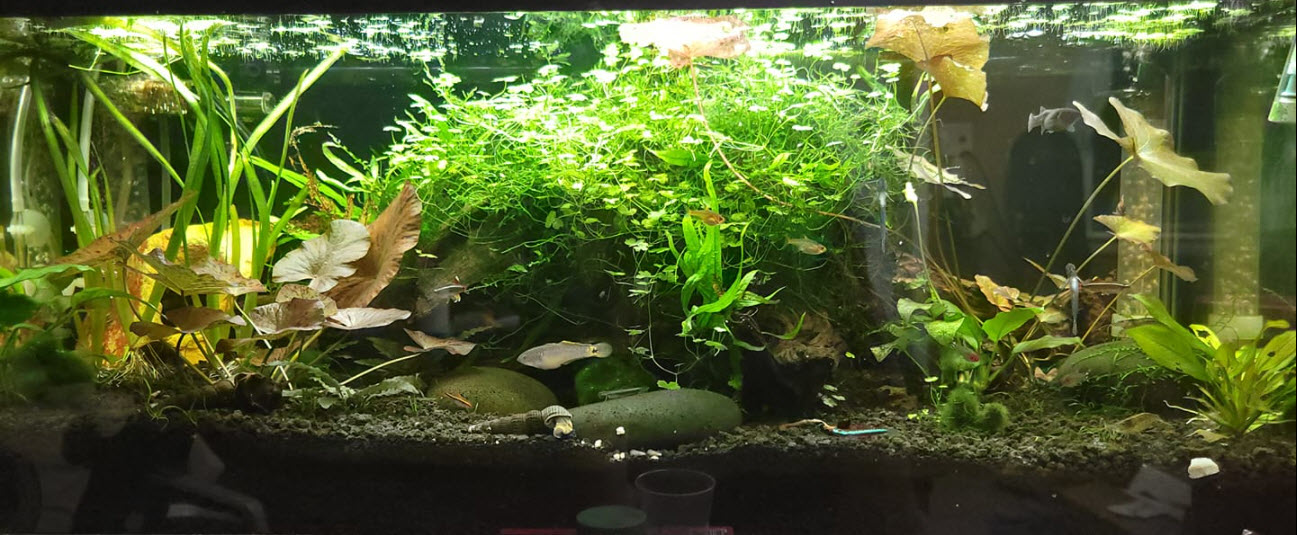
Another Negative Commentary
I ran across the following commentary on undergravel filters. Much the same comments as the one above. Again I will look at each point and give my take:
Under Gravel Filters (UGFs)
These are an all-time classic favorite for many aquarists. They are a perforated plate that sits on the bottom of the aquarium, under the gravel. This filter uses the gravel itself as a media. The gravel functions as a biological media as well as mechanical media. The high surface area of the gravel provides ample space for nitrifying bacteria. (This is the ONLY portion of this “review” that is accurate.)
Because of the gravel functioning as a mechanical media, it will trap a lot of debris. This requires the aquarist to keep up with water changes that always include a complete gravel vacuuming in order to attempt to keep the gravel free of debris. (exactly the WRONG thing to do! Vacuuming the gravel removes all the beneficial bacteria and other beneficial organisms living in the gravel. This is a common theme to everyone who dislikes undergravel filters. They say undergravels need to be cleaned once a week AND they don’t work. And I keep pointing out to them that the weekly cleaning of undergravels is exactly WHY they don’t work. But it is like throwing pebbles against a brick wall)
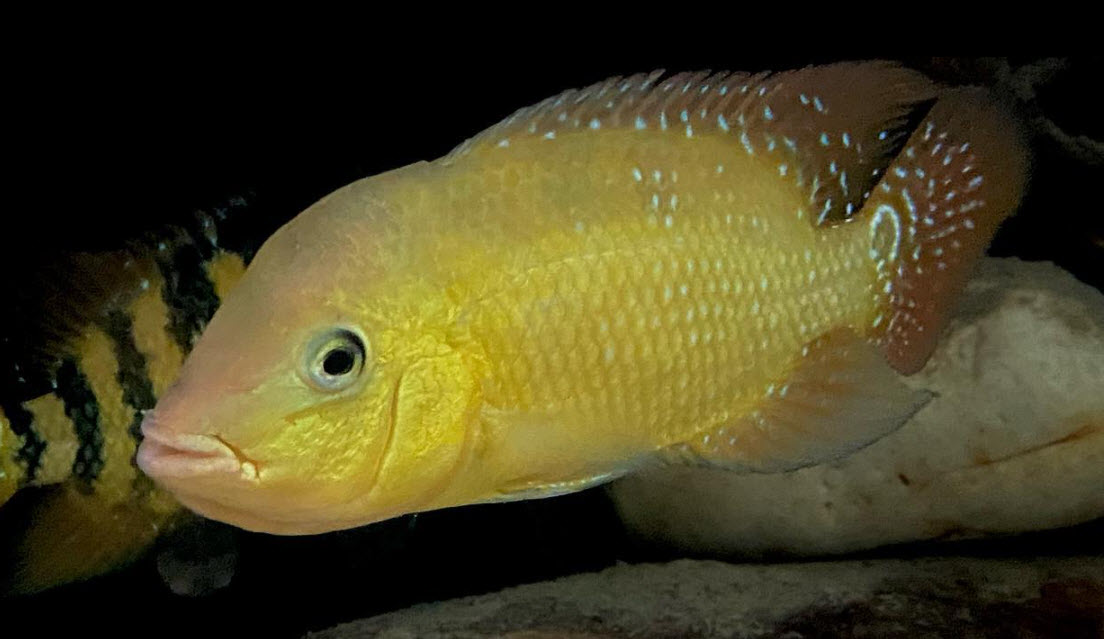
The problems with UGFs are significant though. Two major problems occur with too much debris in the gravel. The first is that debris can build up and actually choke out the nitrifying bacteria and cut off their oxygen supply. (I’ve been using under gravels for 54 years and NEVER had this happen. And I do NOT vacuum my gravel)
The second problem is that debris buildup can lead to excessive nitrate production as the debris slowly breaks down. The plate of the under gravel filter itself will allow debris buildup on the bottom of the tank, out of reach of the aquarist and the gravel vacuum. Some people claim that you can simply run the siphon tube down the riser tubes, but this only removes the debris within a couple of inches of the riser tubes, if that. All this debris building up leads to an excessive nitrate level. (Yes. Nitrate can be absorbed by bacteria in the undergravel filter [assimilatory denitrification]. This nitrogen in the undergravel filter stays there being constantly simply recycled forever. It does NOT decompose suddenly and release its nitrate. And as I point out above, I’ve had white undergravel plates running for years in tanks where I can look up through the bottom of the tank and there is never any debris apparent.)

Many fish are diggers and since water takes the path of least resistance, unless the gravel is the exact same depth throughout the tank it will not evenly go through the gravel. Once a fish digs down close to the plate, the under gravel filter itself is almost useless. This means that the effective area for nitrifying bacteria is only a fraction of all the gravel. Even with a perfectly level gravel layer, the water is not going to pass through the gravel evenly, it will pass through the gravel immediately adjacent to the riser tubes. Again, allowing water to bypass the vast majority of the gravel. (This makes the gross assumption that the filter plates can’t distribute the water flow in the undergravel so that all parts of the gravel have at least a modicum of flow through them. Look at the plastic plates in an undergravel filter. The thin openings are sized to distribute the flow! This sizing works well even with uneven gravel distribution)
UGFs are not compatible with sand and other very fine substrates, which are a better substrate than gravel anyway. (I for one do not like sand. It lets feces float over it and is decidedly less attractive to me than gravel. Sand also give zero nitrifying capacity. And fine sand will considerably reduce the life of all the pump impellers with magnetic drives. But that being said , sand CAN be used in an undergravel filter if one puts down weed fabric first)
Considering that UGFs should also have another filter on the tank in addition to the UGF and the problems that they can cause, most aquarists have left them behind in the ’80s and moved on to other types of filters that are better in every way. (this is the old argument that “old technology is bad technology”. It is a vacuous argument. The wheel is “old technology” yet everyone still uses at least four of them on a daily basis)
Do not use UGFs in any tank. (LOL I’ve had them in one to twenty tanks for fifty four years and LOVE them!)
One has to understand this “article” is from the website https://advancedaquariumconcepts.com/aquarium-filter-guide/. This website has a series of links where you can buy expensive canisters and hang on back filters. This website gets a percentage of everything that is purchased through their links. Do you really think they are going to give a good review to an inexpensive filter like under-gravels?

The Biocenosis Undergravel Filter
There is a type of undergravel filter which is pushed by one Doctor Kevin Novak. It is called the “biocenosis plenum” or “anoxic plenum”. It supposedly reduces nitrates to nitrogen gas and makes it so one does not need to do water changes. It is made up of laterite (an iron containing mineral) and clay cat litter.
The “biocenosis plenum” does not work, as confirmed by yearlong testing with controls. The analysis done with this test shows why the plenum does not work and cannot work. The analysis also explains why so many people say they have had “success” with the plenum. It is something called “assimilatory denitrification”.
Doctor Novak’s whole spiel on his YouTube channel is just kind of some very wordy and lengthy ramblings on the “History of Aquariums” with a bunch of scientific terms jumbled together in a totally incoherent manner. I’m quite honestly not to sure what to make of the whole thing. For more information go to this link:
8.9.1. Biocenosis Reactor
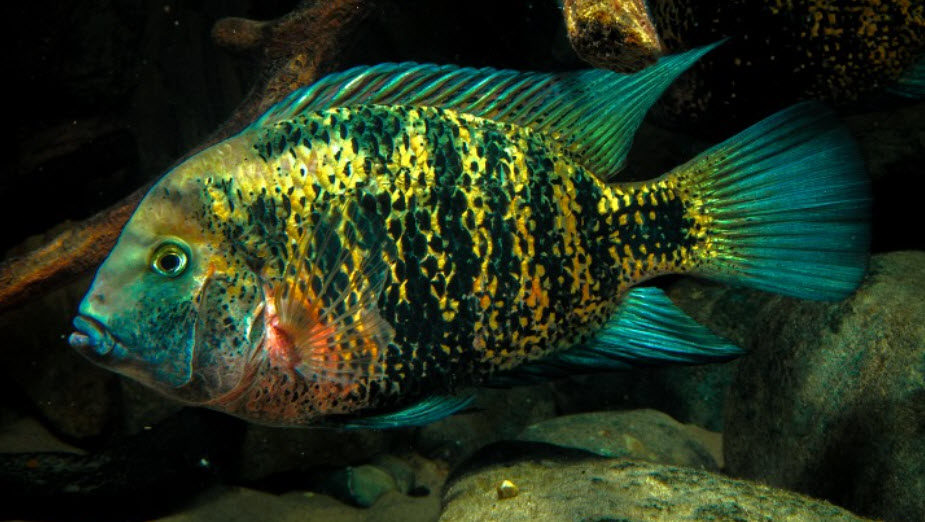
DIY Undergravel Filters
We have designed a DIY undergravel filter for those with a DIY bent. It is not cheap but some want such a design:
8.5.2. DIY Undergravel Filter
.
Return to Filters Menu
.
Aquarium Science Website
The chapters shown below or on the right side in maroon lead to close to 400 articles on all aspects of keeping a freshwater aquarium. These articles have NO links to profit making sites and are thus unbiased in their recommendations, unlike all the for-profit sites you will find with Google. Bookmark and browse!
.

Dave says
In reply to Nessa …… Khuli loaches and corydoras DO NOT “really love sand”. They do just as well with pure gravel as they do with pure sand. And any sand mixed with an undergravel will foul the gravel sooner or later.
Fluval stratum is worthless gravel. It is not a “soil” nor is it “active”. https://aquariumscience.org/index.php/15-7-plant-substrates/
Nessa says
Hi, I really like this article. Just thinking about my khuli loaches and corydoras, they really love sand, is there any way I could sort of do a ‘half and half’ – the back part of the aquarium with gravel and an ugf, and the front part with sand? Divided by rocks or something similar? Or is there another way to do it that I haven’t considered?
My second question is in reply to a reply from another commenter, you said that active soil is not good with an ugf. Is that because it’s soil or because it’s active? Was thinking of using Fluval stratum or something similar in the planted area.
All thoughts welcome! Thank you
Dave says
In reply to Scott ….. The undergravel is not causing your high nitrate and hardness. One possibility is that your tap water has high nitrates and hardness. The hardness could also be due to the substrate. High nitrates can be caused by over feeding. Note neither “High nitrates” or “High hardness” is a real problem in most aquariums
Scott Brooks says
I am currently running undergravels in a planted 40 breeder (3 plates made for a 29 gal). Air stones only – no power head. Aqua clear 50 HOB secondary filtration. Eco Complete substrate. Amazon swords, crypts, java ferns, anubias. 1 large angel, 1 ram, 6 cherry barbs, 6 neons, 2 Cory’s (started with 5 but have lost 3). Tank has been cycled and running for 1 year. Never any ammonia or nitrite but nitrates and hardness are always high, even after 30-40% water changes. Carbonate and ph within acceptable parameters. I am starting to suspect the Undergravel is causing the high nitrates and hardness. If so, how do I correct the nitrate and hardness levels?
Dave says
In reply to Jamie ……. Just buy the cheapest one can find.
Jamie says
Dave,
Thanks very much for your website, I think I have read most of it now. Absolutely great, I have especially enjoyed the articles on UGF and Goldfish.
In setting up my 20 gallon for Goldfish, I have the choice of a white plastic moulded UGF plate or sturdier and thicker looking grid sections. Does it matter? I suspect not so much, but wanted to ask. Thanks in advance.
Dave says
In reply to Mike …. six of one half a dozen of the other. Doesn’t make any difference.
Mike says
Hi Dave, should in my 55gallon with the 2 power heads should I connect all 4 of the plates? Or let 1 power head drive 2 separately?
Dave says
In reply to Mike ….. yes, you are just fine with two 127 gph powerheads.
Mike says
Hi Dave I’m in the process of starting a 55gallon with a under gravel filter with power heads. Would 2 127gph power heads be sufficient or should I go with the next size up? I’m also going to supplement with other filtration as well. Thank you
Eric Sten says
I also still have, and use, the white tray UGFs that I got over 30 years ago when I first got into the hobby. I stopped for a long while and recently got back into it in May, using the UGF. On one side of the filter I have an air stone powered uplift tube and the other a cartridge filter pump connected to it. Up until about a week ago or so all was great water quality wise except for some higher nitrates. Then I did, what I now have learned was bad, a deeper vacuuming of the gravel and pulled out a lot of “brown gunk” thinking that was “good”. A few days later my ammonia and nitrites spiked up some. Where they were normally 0 ppm, now they are .5 to 1 ppm and I couldn’t figure out why. This article pretty much answered that question, I “cleaned” what was keeping the thing clean. Now that I know I won’t be making that mistake again. Thank you for the very informative article!
kelvn Bond says
You raise an excellent point about the misconceptions surrounding under-gravel detritus and oxygen depletion in aquariums. I agree that the bacteria’s low metabolism makes them much less vulnerable to oxygen fluctuations.
Dave says
In reply to Dan …. Sounds like an excellent plan. Go for it. Just do any one of the fish-in cycling methods to get it going.
Dave says
In reply to Tyler …. The gravel will do excellent mechanical filtration which never needs cleaning. Good Idea!
Tyler says
Hey Dave
I have a 75 gallon tank already set up and running with a sand substrate. The stocking is relatively light.
Currently my only filtration is a k1 micro fluidized bed in the sump. I would like to add some form of mechanical filter prior to the sump and I would like for it to be practically maintenance free.
I was thinking about setting up a container prior to the sump to contain what would effectively be an external under gravel filter. I know that the gravel is predominantly for biological filtration, but do you think that I could get good mechanical filtration out of a set up like this?
I was thinking about using one of those large square buckets that kitty litter comes in with 4″ or so of gravel. I already have the filter design worked out, I’m just not sure if the gravel will be sufficient to catch any debris and contain it while it breaks down.
Thank you
Dan says
Hi! I am looking for advice on adding an under gravel filter to my ~ 2 month old ten gallon tank. I have a hang on back filter on there now but want to increase stocking and want to help establish this tank for the foreseeable future, so after reading your site I am convinced I need to add a UGF. I had an aquarium as a kid (late 1990s) and I had a UGF in there and loved it, so I was surprised when I went to the pet store this summer and asked for a UGF and was told they don’t carry them because UGFs work “too well”!
Any advice on the logistics of how to go about retrofitting the tank?
I was planning to siphon as much water as possible into bucket and put the fish ( 5 small danios and a kuhli loach) in there with an airstone. Then I was going to scoop out the gravel into another bucket and install the UGF and set everything back up. Any feedback on that approach? Do you have an article on how to go about this exercise in a more clever manner?
And thank you for creating this repository of truth. It is incredibly refreshing as a newcomer to the hobby to read so much straightforward information that rings true and cuts through the confusion that’s out there.
Dave says
In reply to Archie …… One more in the middle
Archie says
Hi, David,
Thanks for your insightful and systematic writings of the whole fish-keeping hobby! It’s very enlightening to read.
I am setting up a new 60 gallon breeder tank (48″ x 18″ bottom area and 16″ height) and needless to say I am choosing to use the under gravel filter.
Question: I bought the Penn-Plax 40-55 gallon and it comes with 4 plates and 4 suction tubes. how many suction tubes should I use? In addition to the two on each extreme corners, do I need to add one or two in the middle? I plan to cover it with 3″ of gravel.
Thanks!
Tom says
Wow. Just wow. Owen Wilson in every Hollywood movie he’s ever been in:“WOW!”
This website and the information you provide without bias is so useful and important to people like me who are just getting started. I have spent hours on your site and haven’t been steered wrong on anything. Which is crazy considering how often you advise the opposite of the “latest and greatest” trends. Thank you for providing evidence-based (not commission-based) advice.
If you have any other media, products, or ways to support the site please let me know!
Keep up the great work!
Tom
Dave says
In reply to Sam ….. Every water change turn into a pain in the butt to re-hook everything up. It is not a good idea.
Sam says
Hi Dave, thanks for your excellent site. I have really enjoyed myself looking through it. I’ve a probably dumb question – would it be at all possible to hook up a HOB filter to an under gravel filter? Or are there contraindications for it?
Dave says
I would guess three adult Oscars.
Conor says
Hi Dave, thanks for this info on UGF!! How many adult Oscar’s would you estimate 4 inches of 3-6mm gravel around 4 inches deep in a 125 gallon aquarium would support bio load wise? Run on power heads.
Dave says
In reply to Eve …. Yes a powerhead will be too strong for a ten gallon with a betta. An air operated UGF would work though.
Eve Taylor says
Dave (Dr. Dave?), Would one power head attached to a UGF be too strong for a 10 gallon tank with one Betta? I also have a small HOB and a small sponge filter in the tank. Will get 3/16th gravel to replace the Caribsea Peace River gravel.
Thank you,
Eve
Dave says
In reply to Kathie … Probably in infusoria loom caused by over feeding. Shrimp feed largely on algae. Cut way back on your feeding and the water will clear.
Kathie Perron says
I had an UGF in the 70’s which worked beautifully. I now have a 20 gal (a year old) with about 2 to 3 inches of gravel and an UGF. I have noticed my water is somewhat cloudy and when looking very closely I can see tiny particles floating around and not settling. The gravel is clean so something is working. I do a 25% water change about every 2 weeks.
Any ideas why the water is cloudy? I first thought it was a bacterial bloom but it hasn’t improved in weeks.
Thanks.
I have 6 cories and about 100 shrimp and want to add more fish
Dave says
Kieran … four inches will work just fine.
Kieran says
Thanks Dave appreciate the reply.
I’m thinking of going for a deep gravel substrate up to 4 inches. Would this deep work fine?
Dave says
In reply to Kieran …. I had a big old Oscar setup much like you are describing. It worked very well. Every day he would re-arrange the gravel and every day when I fed him I would smooth it back out. It was a game we played. I’ve never found a need to vacuum the gravel with any undergravel filter.
Kieran says
Hi, I’m setting up a 125gallon for a big Jaguar Cichlid male who I live to bits and don’t want to risk losing due to a canister leak. I’m going to be putting an under gravel filter in this tank run by 2 power heads on each end with 3-4inch of gravel substrate. I love the simplicity of the UGF and as the old saying goes ‘simplicity is the ultimate form of sophistication.’ I would just like to know will it still work ok if my jag digs and exposes a few parts of the filter plate and do you recommend just siphoning the surface of the gravel when doing water changes? Thanks
Dave says
In reply to Frank….. four powerhead powered lift tubes will do the job just fine. Air operated will need six or more.
Frank says
IS there a general recommended spacing that should be used. I had AI do some deep research of sources an the general advise was to have uplift tubes every 18 inches or so. In my 280 gallon build that will be coming on-line at some point in July ’24 this would result in needing 5 or 6 uplift tubes. Just to keep the general look of the aquarium tidy, I am hoping to only use 4.
The aquarium will also have two Oase 850 Biofilters in it.
Thoughts?
Dave says
In reply to Ian ….. About the only thing that can cause gumming up at that high a level is gross overfeeding. Stop feeding for at least two weeks and then VERY VERY LIGHTLY start feeding again. Add a ton of aeration.
Ian Allen says
I’ve got a UGF with 3 inches of gravel (3 to 10 mm), and it is getting gummed up somehow. The powerhead flow clearly reduces over about a week until it can barely cause a ripple in the surface, and the tank starts to stagnate. I can stir the gravel up and it helps, but I notice that the gravel is almost totally glued together somehow and the problem always comes back. My water is pretty hard from the tap, not sure what to do about it.
In the meantime, I added an airstone so I can at least stop killing my poor fish. The tank is about 4 weeks old, now.
Dave says
Stefano….Add an undergravel to your internal filter. They do not leak.
Stefano says
In reply to Dave ….I would prefer to avoid external filters due to potential risks of leaks (I keep the aquarium in the living room…) that’s why I was aiming for a Hang On Back Tidal 55/75 filter for my 200-liter aquarium which doesn’t run the risk of leaks because the pump is inside the aquarium (at least it doesn’t have issues with gaskets, etc…) that’s why I was asking, I think I will opt for that one and I will only use pot scrubbers as indicated in your article about the best media 🙂
Thanks!
Dave says
In reply to Stefano …. That would be a good way to set up a small aquarium (less than 30 gallons). A better way would be an undergravel plus a SunSun HW-603B External Canister Filter ($40). It has 80 cubic inches foam which makes a great biological filter if you only very lightly clean it once every four to eight months (ignore the profit minded directions which say to replace the foam).
Stefano says
Adding an Hang on Back filter with K1 media + an aerator that makes it ‘fluid’ to an aquarium that already has an undergravel filter can be good or bad? (I am setting up the aquarium now and need to decide how to configure it).
Thanks!
Dave says
In reply to Stefano….. The black sand should work well for an undergravel. But “fertile soils” and undergravel filters don’t do well together. Stick with only the coarse sand.
Stefano says
Good evening! I have a lot of sand (black quartz from Amtra, which you can find here: [Amazon link](https://www.amazon.it/dp/B088SJC2J4)) with a diameter of 1.6-2mm. Can I use it as a substrate for the undergravel filter? Does it make sense to use a fertile substrate and place the Amtra gravel on top of it?
Thanks!
Claudio says
Hi,
three years ago I setup a “hybrid” filter system for a cubic tank, 45cm x 45cm in surface. I already had sand substrate,, like Mr. Hau tanks but not so deep: in my tank goes from 5 cm in the front to about 10 cm in the rear. Small internal filters clogged frequently and needed weekly maintenance.
I have LOT of plants and I stocked the aquarium with about 20 Medakas for the first year (raised from eggs; now I have left 10 since I would like to see if I could breed them in the tank).
Then I added a clay pot, 20 cm in diameter and about the same height, put an air lifter tube in the middle and filled with used ceramic rings and lava rock gravel (bottom layer), average size gravel (about 3-5 mm) on the top layers. So now I have a somewhat deep sand bed on 3/4 of the surface of the tank and a “deep gravel – high volume” pot on 1/4. The pot can be easily dissimulated with rocks and plants, you see just the top of the air lifter tube, The esthetic is important since the tank is in the dining room.
In 3 years, with light stocking (Medakas), I never needed to clean the gravel in the pot, have lush plants (just easy plants, but many and lush), water circulation, and healthy fishes (my Medakas are approaching 4 years without). Given the volume of the pot, I think I can consider it like if it is an undergravel filter covering a bit less than 1/2 of the aquarium floor. I just siphon lightly the larger debris that accumulates on the sand when there is too much brown debris.
So, it is not a pure undergravel filtered tank but the concept seems to work fine.
Dave says
In reply to Jon … Undergravels, in theory, should work very well in saltwater (reference a Joibert (spelling?) Plenum which was saltwater)
Jon says
Thanks for the info! Was a good read, I’ve been doing a bit research on this topic in saltwater as well but really can’t find a reason why these aren’t used there. Many people contribute them to “crashing” the aquarium or being a “nitrate factory” (<- I don't mind that) but I can't seem to understand why they don't supposedly work in saltwater since it has even more biodiversity to break down organics than freshwater. The reverse flow one came up but nothing about traditional, for whatever reason, what do you think is this just an old wives tale being perpetuated or is there actual reasoning to it?
Dave says
In reply to Jon … When it comes to flow direction in an undergravel filter the whole subject is a tempest in a teapot. It probably simply makes no difference, “six of one, half a dozen of the other”.
As for hypoxic conditions developing in any substrate, it is RARE but it can occur. It generally means several things are occurring: 1, very heavy stocking 2, heavy feeding 3, low protein food 4, poor water circulation 5, poor aeration Further reading on this can be found in this article: https://aquariumscience.org/index.php/18-5-heavy-stocked-maintenance/
Jon says
So does reversing the flow (also having a prefilter on the powerhead) and driving air from the bottom not keep detritus from entering the system and that be more beneficial? I know you’ve said clogging is not too much of an issue but if I were to have it on a heavily stocked fry tank for example, and just clean the prefilter regularly, wouldn’t reversing the flow be better since less waste would accumulate and I won’t be removing the “good” bacteria. Also in substrates without aeration why does harmful bacteria develop in those. Do low oxygen level or trapped detritus cause them to thrive and on disturbing can kill fish?